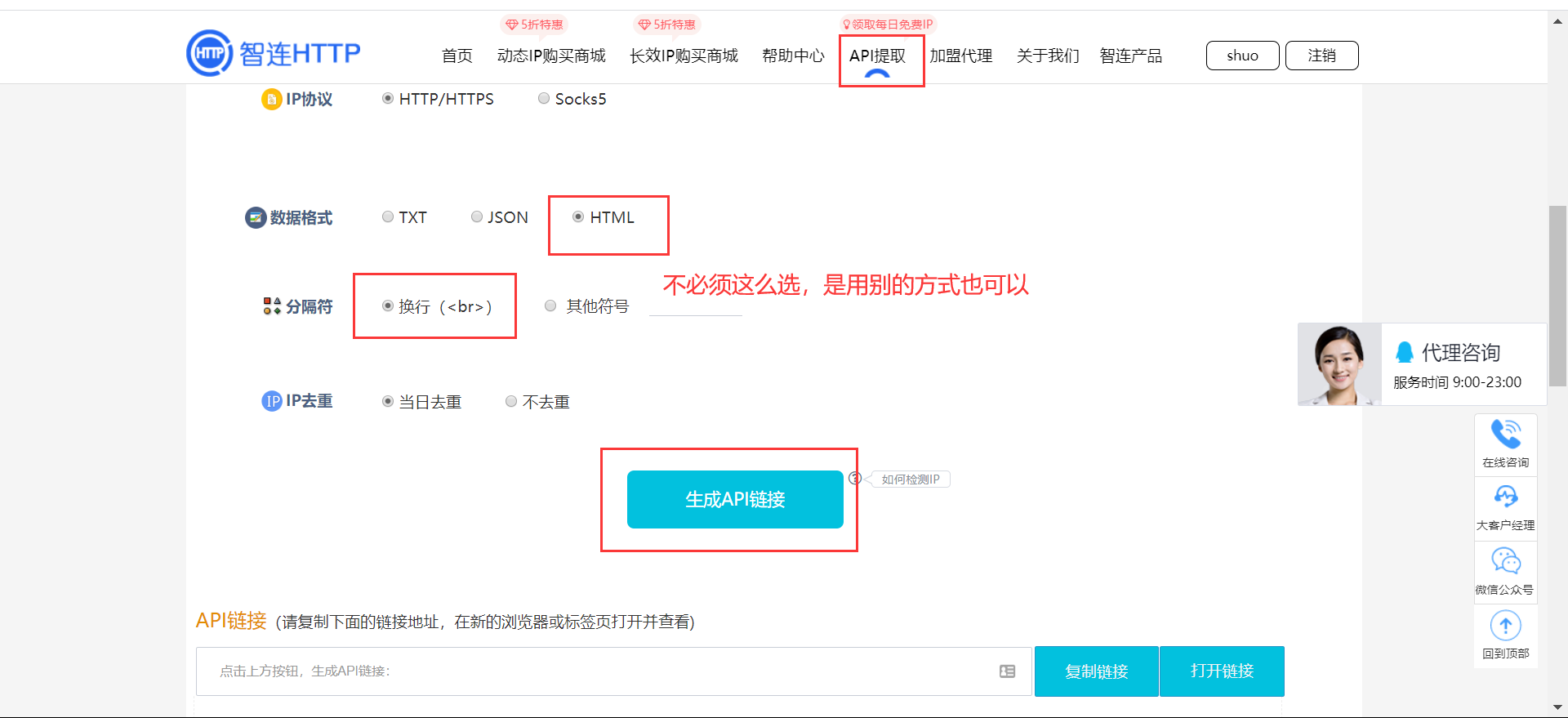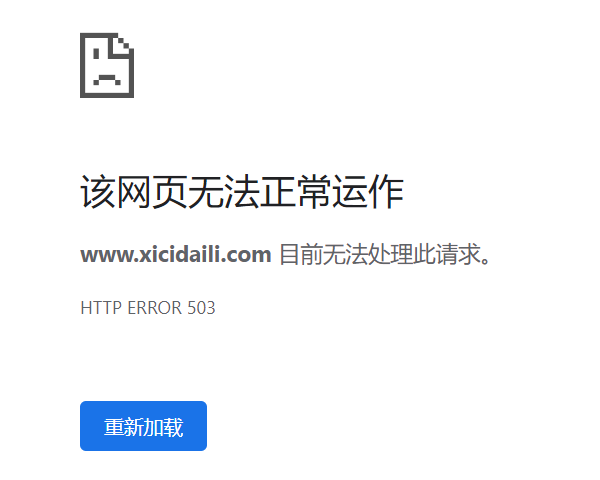requests 高级用法之获取 Cookie、使用代理和识别验证码
获取 Cookie
Cookie 是存储在客户端浏览器中的一组键值对。
web 中 Cookie 的典型应用为免密登录。
Cookie 和爬虫之间也有千丝万缕的关联:
- 有时候,对一张页面进行请求的时候,如果请求的过程中不携带 Cookie 的话,那么我们是无法请求到正确的页面数据。因此 Cookie 是爬虫中一个非常典型且常见的反爬机制。
接下来,我们看一个需要用到 Cookie 的爬虫案例。
需求:爬取雪球网中的咨询信息。
网址 url:https://xueqiu.com/
分析:
- 判定爬取的咨询数据是否为动态加载的
- 相关的更多咨询数据是动态加载的,滚轮滑动到底部的时候会动态加载出更多咨询数据。
- 定位到 ajax 请求的数据包,提取出请求的 url,响应数据为 json 形式的咨询数据
尝试使用常规方法抓取数据:
import requests
headers = {
'User-Agent': 'Mozilla/5.0 (Windows NT 10.0; WOW64) AppleWebKit/537.36 (KHTML, like Gecko) Chrome/80.0.3987.132 Safari/537.36'
}
url = 'https://xueqiu.com/v4/statuses/public_timeline_by_category.json?since_id=-1&max_id=20369485&count=15&category=-1'
response = requests.get(url=url, headers=headers)
print(response.json())数据拿到了吗?拿到了。但是为什么不开心?因为拿到的数据是这么一串玩意儿:
{'error_description': '遇到错误,请刷新页面或者重新登录帐号后再试', 'error_uri': '/v4/statuses/public_timeline_by_category.json', 'error_data': None, 'error_code': '400016'}数据没写错,但是却没拿到正确的响应。我们没有请求到我们想要的数据
原因:我们没有严格意义上模拟浏览器发请求,比如没有携带 Cookie。
处理:可以将浏览器发请求携带的请求头,全部粘贴在 headers 字典中,将 headers 作用到 requests 的请求操作中即可。
Cookie 有两种处理方式
方式1:手动处理
- 将抓包工具中的cookie粘贴在headers中
- 弊端:cookie如果过了有效时长则该方式失效。
方式2:自动处理
基于Session对象实现自动处理。
获取一个 session 对象:
requests.Session()返回一个 session 对象。使用 session 对象可以像 requests 一样调用get和post发起指定的请求。只不过如果在使用 session 对象发请求的过程中产生了 cookie,cookie 会被自动存储到该 session 对象中。在下次再次使用 session 对象发起请求时,该次请求就是携带cookie进行的请求发送。
问:在爬虫中使用 session 的时候,session 对象至少会被使用几次?
答:两次。第一次使用 session 是为了将 cookie 捕获且存储到 session 对象中。下次的时候就是携带 cookie 进行的请求发送。
一般情况下,直接访问首页就可以获得浏览器返回的 Cookie。使用 Cookie 即可进行下一步的操作。
上面雪球网的例子,我们就可以修改成这样:
import requests
headers = {
'User-Agent': 'Mozilla/5.0 (Windows NT 10.0; WOW64) AppleWebKit/537.36 (KHTML, like Gecko) Chrome/80.0.3987.132 Safari/537.36'
}
session = requests.Session() # 创建sesion对象
# 第一次使用session捕获且存储cookie,猜测对雪球网的首页发起的请求可能会产生cookie
session.get(url='https://xueqiu.com/', headers=headers) # 捕获并存储cookie
url = 'https://xueqiu.com/v4/statuses/public_timeline_by_category.json?since_id=-1&max_id=20369485&count=15&category=-1'
response = session.get(url=url, headers=headers) # 携带cookie发起的请求
print(response.json())顺利拿到想要的数据。
代理操作
在爬虫中,所谓的代理指的就是代理服务器。代理服务器的作用是用来转发请求和响应。
在爬虫中为什么会需要使用代理服务器?
- 如果我们的爬虫在短时间内对服务器发起了高频的请求,那么服务器一旦检测到这样的一个异常的行为请求,就有可能将该请求对应设备的 ip 禁掉,这样这台 client 设备就无法对服务器端再次进行请求发送(ip被禁掉了)。
- 如果 ip 被禁,我们可以使用代理服务器进行请求转发,破解 ip 被禁的反爬机制。因为使用代理后,服务器端接受到的请求对应的 ip 地址就是代理服务器而不是我们真正的客户端的。
代理服务器分为不同的匿名度:
- 透明代理:如果使用了该形式的代理,服务器端知道你使用了代理机制也知道你的真实 ip。
- 匿名代理:知道你使用代理,但是不知道你的真实 ip
- 高匿代理:不知道你使用了代理也不知道你的真实 ip
代理的类型
- https:代理只能转发 https 协议的请求
- http:转发 http 的请求
常用的代理服务器
- 快代理
- 西刺代理
- goubanjia
- 代理精灵(推荐):http://http.zhiliandaili.cn/)
接下来,我们先通过高频次的爬取西刺代理的网页,让其封禁我们的 IP(尽管如此,也不要写死循环,温柔一点。我们的目的是让他把我们禁掉,而不是把人家搞崩)。然后通过 IP 代理的方式,继续爬取。
我们使用的代理时代理精灵,网站上面有给。买一个最低配的 3 元套餐,用作练习测试。
点击 API 提取,选择我们刚刚支付的套餐,然后选择要生产的数量,还有协议格式之类的。最后点击 生成 API 链接 即可。

首先使用生成好的链接封装一个代理池:
# 刚刚生成的API链接
proxy_url = 'http://ip.11jsq.com/index.php/api/entry?method=proxyServer.generate_api_url&packid=1&fa=0&fetch_key=&groupid=0&qty=10&time=1&pro=&city=&port=1&format=html&ss=5&css=&dt=1&specialTxt=3&specialJson=&usertype=15'
page_text = requests.get(url=proxy_url, headers=headers).text
tree = etree.HTML(page_text)
http_proxy = [{'https': ip} for ip in tree.xpath('//body//text()')] # 代理池接下来,对西祠代理发起一个高频的请求,让其将我本机 ip 禁掉。将下面的代码多执行几次,直到报错。
url = 'https://www.xicidaili.com/nn/%s'
ip_list = []
for page in range(1, 11):
new_url = url % page
page_text = requests.get(url=new_url, headers=headers).text
tree = etree.HTML(page_text)
# 在xpath表达式中不可以出现tbody标签
tr_list = tree.xpath('//table[@id="ip_list"]//tr')[1:]
for tr in tr_list:
ip = tr.xpath('./td[2]/text()')
ip_list.append(ip)
len(ip_list)然后浏览器访问 https://www.xicidaili.com,访问不到,说明 IP 已经被禁掉。

然后,使用代理,尝试继续访问:
# 生成代理池,注意代理的API地址要及时更新
proxy_url = 'http://t.11jsq.com/index.php/api/entry?method=proxyServer.generate_api_url&packid=1&fa=0&fetch_key=&groupid=0&qty=53&time=1&pro=&city=&port=1&format=html&ss=5&css=&dt=1&specialTxt=3&specialJson=&usertype=15'
page_text = requests.get(url=proxy_url, headers=headers).text
tree = etree.HTML(page_text) # 代理池
http_proxy = [{'https': ip} for ip in tree.xpath('//body//text()')]
# 代码不需要大改动,只需要在requests请求中加上代理即可
url = 'https://www.xicidaili.com/nn/%s'
ip_list = []
for page in range(1, 11):
new_url = url % page
# 让当次的请求使用代理机制,就可以更换请求的ip地址
page_text = requests.get(url=new_url, headers=headers, proxies=random.choice(http_proxy)).text
tree = etree.HTML(page_text)
# 在xpath表达式中不可以出现tbody标签
tr_list = tree.xpath('//table[@id="ip_list"]//tr')[1:]
for tr in tr_list:
ip = tr.xpath('./td[2]/text()')
ip_list.append(ip)
print(len(ip_list))就又可以爬取到数据了
验证码的识别
我们往往通过基于线上的打码平台识别验证码,而不是自己用机器学习写一个。虽然能够实现功能,但是自己写的毕竟没有大的数据量支撑,且不是一朝一夕能搞定的。
常用的打码平台有:
1.超级鹰(使用):
http://www.chaojiying.com/about.html
- 注册(用户中心的身份)
- 登录(用户中心的身份)
- 查询余额,请充值
- 创建一个软件ID(例如:899370)
- 下载示例代码
2.云打码
3.打码兔
超级鹰打码平台 SDK 整理封装成一个函数,传入验证码地址和图片的验证码类型数字,即可得到验证码识别结果。
#!/usr/bin/env python
# coding:utf-8
import requests
from hashlib import md5
class Chaojiying_Client(object):
def __init__(self, username, password, soft_id):
self.username = username
password = password.encode('utf8')
self.password = md5(password).hexdigest()
self.soft_id = soft_id
self.base_params = {
'user': self.username,
'pass2': self.password,
'softid': self.soft_id,
}
self.headers = {
'Connection': 'Keep-Alive',
'User-Agent': 'Mozilla/4.0 (compatible; MSIE 8.0; Windows NT 5.1; Trident/4.0)',
}
def PostPic(self, im, codetype):
"""
im: 图片字节
codetype: 题目类型 参考 http://www.chaojiying.com/price.html
"""
params = {
'codetype': codetype,
}
params.update(self.base_params)
files = {'userfile': ('ccc.jpg', im)}
r = requests.post('http://upload.chaojiying.net/Upload/Processing.php', data=params, files=files, headers=self.headers)
return r.json()
def ReportError(self, im_id):
"""
im_id:报错题目的图片ID
"""
params = {
'id': im_id,
}
params.update(self.base_params)
r = requests.post('http://upload.chaojiying.net/Upload/ReportError.php', data=params, headers=self.headers)
return r.json()
def get_img_code(img_path, img_type):
chaojiying = Chaojiying_Client('liushuo', 'liushuo', '904154') # 用户中心>>软件ID 找到或生成软件ID
im = open(img_path, 'rb').read()
return chaojiying.PostPic(im, img_type)['pic_str'] # 验证码类型 官方网站>>价格体系
print(get_img_code('a.jpg', 1902))模拟登录
有些网站的信息,是需要我们登录之后,才能拿到的。要想爬取这些网站的内容,我们首先要进行模拟登录。
模拟登录的流程:
- 对点击登录按钮对应的请求进行发送(post 请求)
- 处理请求参数:
- 用户名
- 密码
- 验证码
- 其他的防伪参数
需求:登录古诗文网,获取登陆成功后的页面
登陆页面 url:https://so.gushiwen.org/user/login.aspx?from=http://so.gushiwen.org/user/collect.aspx
首先,我们猜测,需要输入用户名密码和验证码信息即可登录:
# 识别验证码
url = 'https://so.gushiwen.org/user/login.aspx?from=http://so.gushiwen.org/user/collect.aspx'
# 解析验证码图片的地址
page_text = requests.get(url=url, headers=headers).text
tree = etree.HTML(page_text)
img_code_url = 'https://so.gushiwen.org' + tree.xpath('//img[@id="imgCode"]/@src')[0]
img_data = requests.get(url=img_code_url, headers=headers).content
# 将验证码图片保存到本地
with open('b.jpg', 'wb') as fp:
fp.write(img_data)
# 识别验证码
code = get_img_code('b.jpg', 1902)
print(code)
login_url = 'https://so.gushiwen.org/user/login.aspx?from=http://so.gushiwen.org/user/collect.aspx'
data = {
'__VIEWSTATE': 'zLcWU1Ihz+ZP28Jlu5xMxY8NMnEHb6jYi3hkBbQemydBVHdU8VMEyRw7jL0QOdTEnWM6aGEQMYQiKLb0fccd11U/MqxMMEpMBNI6pF8mr9Xzi0ARS/O3rvKz+vM=',
'__VIEWSTATEGENERATOR': 'C93BE1AE',
'from': 'http://so.gushiwen.org/user/collect.aspx',
'email': 'liushuo432@outlook.com',
'pwd': 'liushuo',
'code': code, # 动态变化
'denglu': '登录',
}
# 对点击登录按钮发起请求:获取了登录成功后对应的页面源码数据
page_text = requests.post(url=login_url, headers=headers, data=data).text
with open('gushiwen.html', 'w', encoding='utf-8') as fp:
fp.write(page_text)打开生成的 gushiwen.html 文件,并没有成功登录。
对比我们的请求和浏览器发送的请求,可以获得这样两个信息:
- 浏览器的请求有携带 Cookie,或许是因为我们没有携带 Cookie 信息,从而导致登录失败
- 从打印出来的验证码数据来看,验证码识别是正确的,所以不可能是验证码的问题
所以接下来我们尝试携带 Cookie 进行模拟登录:
# 携带 Cookie 模拟登录
session = requests.Session()
url = 'https://so.gushiwen.org/user/login.aspx?from=http://so.gushiwen.org/user/collect.aspx'
page_text = session.get(url=url, headers=headers).text
tree = etree.HTML(page_text)
img_code_url = 'https://so.gushiwen.org' + tree.xpath('//img[@id="imgCode"]/@src')[0]
img_data = session.get(url=img_code_url, headers=headers).content
with open('b.jpg', 'wb') as fp:
fp.write(img_data)
code = get_img_code('b.jpg', 1902)
print(code)
login_url = 'https://so.gushiwen.org/user/login.aspx?from=http://so.gushiwen.org/user/collect.aspx'
data = {
'__VIEWSTATE': 'zLcWU1Ihz+ZP28Jlu5xMxY8NMnEHb6jYi3hkBbQemydBVHdU8VMEyRw7jL0QOdTEnWM6aGEQMYQiKLb0fccd11U/MqxMMEpMBNI6pF8mr9Xzi0ARS/O3rvKz+vM=',
'__VIEWSTATEGENERATOR': 'C93BE1AE',
'from': 'http://so.gushiwen.org/user/collect.aspx',
'email': 'liushuo432@outlook.com',
'pwd': 'liushuo',
'code': code,
'denglu': '登录',
}
page_text = session.post(url=login_url, headers=headers, data=data).text
with open('gushiwen.html', 'w', encoding='utf-8') as fp:
fp.write(page_text)这样就成功访问到我们需要的页面了。
其实我们还有一个东西没有用到,就是 data 中的两个无规律的字符串。在请求参数中如果看到了一组乱序的请求参数,最好去验证这组请求参数是否为动态变化。如果这组参数不变化,直接在请求中写死就行了。但如果请求参数是动态变化的,我们就可能需要对这些数据进行处理:
- 常规来讲一半动态变化的请求参数会被隐藏在前台页面中,那么我们就要去前台页面源码中取找。
- 如果前台页面没有的话,我们就可以基于抓包工具进行全局搜索。